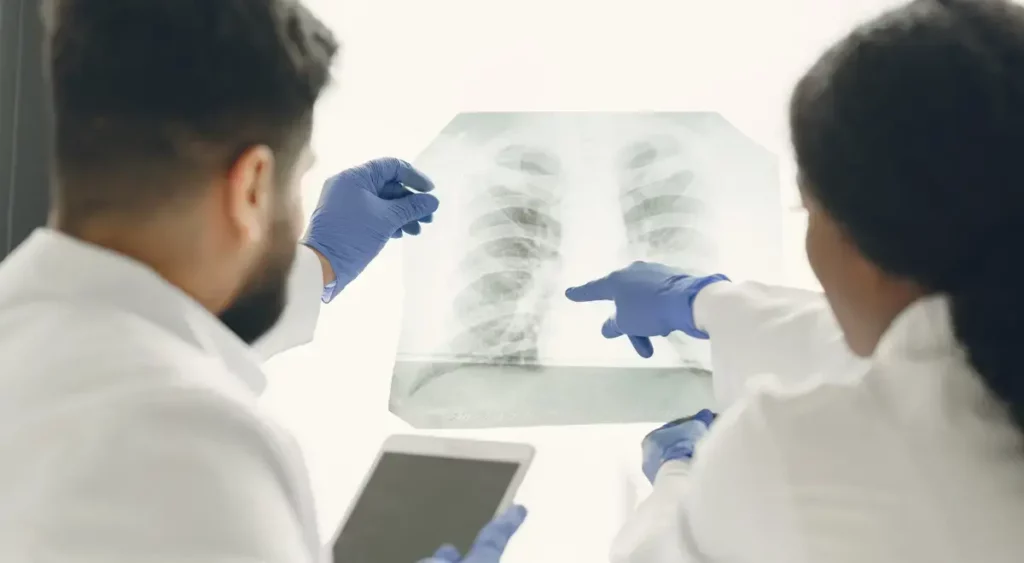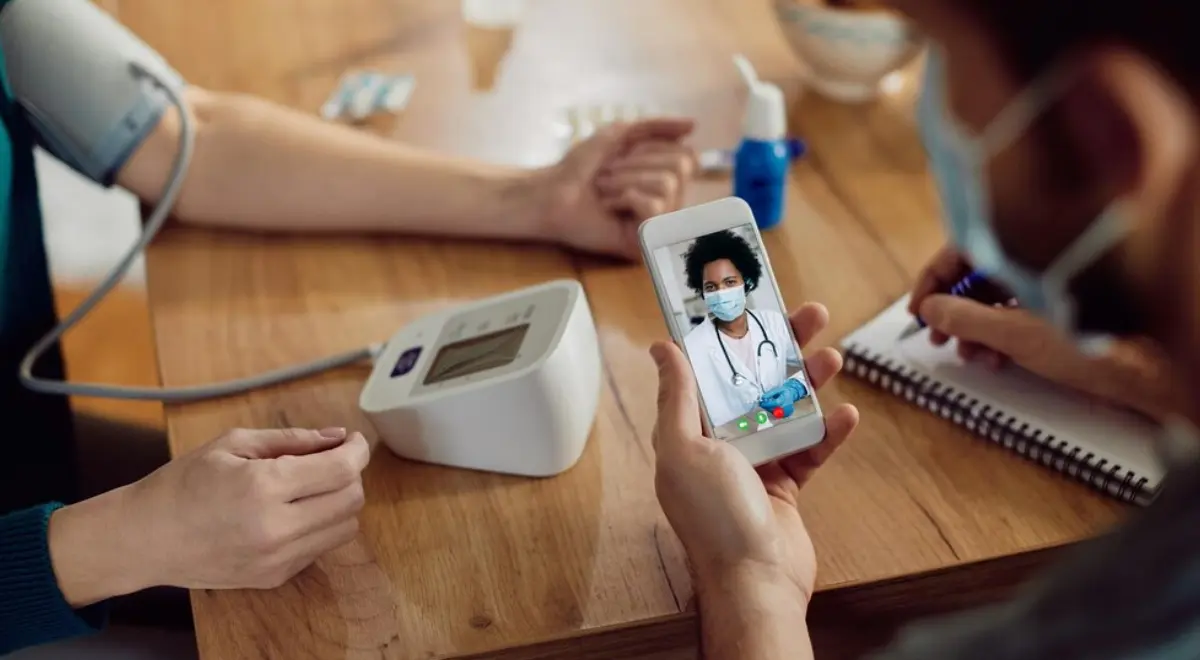Improving COPD Care With Remote Patient Monitoring

Chronic Obstructive Pulmonary Disease (COPD) is a serious lung problem that makes breathing tough for millions of people around the world. Although there’s no cure yet, catching it early and taking good care can slow down how fast it gets worse and help you feel better. That’s where COPD Remote Patient Monitoring (RPM) comes in.
RPM lets you check your lungs functioning, like how much air you can breathe in and how much oxygen is in your blood, right from home. This helps doctors and physicians catch any complications early. Studies have found that people using RPM have way fewer surprise trips to the hospital compared to before. This shows that RPM can really help make COPD easier to deal with by giving doctors a better way to manage it over time.
In this blog, we’ll talk about how COPD remote patient monitoring works and why it’s so helpful for patients.
Table of Contents
ToggleWarning Signs Of COPD
COPD is a set of lung problems that get worse over time and make breathing hard. It’s not something you catch from someone else, and it can often be prevented. COPD is a big health issue and is one of the top causes of death worldwide, affecting about 16 million people in the US alone.
In the beginning, COPD might not show any obvious signs, so a lot of people don’t even know they have it. They just go about their days without realizing anything’s wrong. Most people only go to the doctor when COPD starts causing noticeable problems. But can doctors find COPD early and make it less severe? Luckily, there’s a way called COPD remote patient monitoring that can help spot it early on.
How Can Remote Patient Monitoring Help With COPD?
Spotting COPD early and taking action quickly is super important for keeping patients healthy. Using RPM improves how well physicians can take care of the patients and manage their condition. For patients at risk of COPD flare-ups, RPM can be a lifesaver, catching problems before they get serious. Plus, checking in with remote monitoring devices every day can help both patients and doctors learn more about COPD and come up with a plan that’s just right for each person.
To manage chronic conditions like COPD well, it’s important to stay ahead of the game rather than waiting for problems to pop up. Here are some important reasons why COPD remote patient monitoring is so helpful:
- It makes healthcare easier and more convenient.
- Doctors can keep an eye on more patients and use their time better.
- It lowers the chance of needing to go to the hospital by focusing on staying healthy.
- It encourages people to make healthier choices in their daily lives.
- It saves money on healthcare overall.
COPD remote patient monitoring helps doctors keep an eye on patients who might be at risk, whether they’re getting long-term care or need help right away. Since COPD symptoms aren’t always obvious, keeping an eye on lungs functioning regularly can help catch problems early and get treatment fast.
Role Of RPM Devices In Managing COPD
Remote patient monitoring lets doctors check up on patients who might be at risk even when they’re not at the doctor’s office. It helps them gather lots of info about patients’ health to make better decisions. These devices can really make a difference in how COPD is managed
- Spirometry
Spirometry is a test that checks how well your lungs are doing by seeing how much air you breathe in and out and how fast you can breathe out. People with COPD can use spirometers at home to help their doctors keep track of their lung health.
Patients need to take a big breath and blow into the spirometer as hard and fast as they can. The doctor can then use the results to see if the patient’s lungs are getting worse or if the treatment is working well. If a healthcare professional see any changes, they can adjust the treatment plan right away.
- Pulse Oximetry
Pulse oximetry is a method to check how well your lungs are working by shining a light on your fingertip to see how much oxygen is in your blood. This helps doctors or physicians understand if your body is getting enough oxygen from your lungs.
For people with mild COPD, it can be hard to notice when their oxygen levels drop dangerously low. But by using a pulse oximeter, doctors can keep an eye on these levels. If the oxygen saturation in your blood goes below 90%, the monitoring system will let your doctor know right away so they can help you quickly.
- Remote Peak Flow Monitoring
At-home peak flow meters are like devices that measure how fast you can breathe out. They connect to your phone or computer using Bluetooth or cellular technology. A recent study found that most people using these meters were able to do their breathing tests regularly.
The data from these tests gets sent securely to the doctor’s computer, where they can keep track of how you’re doing. Some meters even send the results automatically, making it easier for you and your healthcare provider to stay connected.
Key Takeaways
The way doctors handle COPD has changed a lot with remote patient monitoring. Now, they can keep an eye on patients’ health all the time by checking things like breathing and oxygen levels. This helps them catch any problems early and stop patients from needing to go to the hospital.
Remote monitoring also saves money and makes managing COPD easier and more accurate. Plus, it gives patients more control over their health. All these good things mean that remote monitoring is really important for COPD care. And as technology gets better, it will only help more COPD patients feel better and stay healthier.
Boost your COPD care with HealthArc’s advanced RPM clinical software and digital health platform focused on smooth patient transition, seamless communication, and enhanced overall patient engagement, ensuring optimal outcomes for both patients and healthcare providers.
Request a free demo or feel free to talk to our team at +201 885 5571 to learn how we can help you manage your COPD symptoms with RPM.
Most recent blogs
Categories
- Advanced Primary Care Management
- Behavioral Health Integration
- Cellular Remote Patient Monitoring
- Chronic Care Management
- Chronic Care Management Billing
- Chronic Care Management CPT Codes
- Chronic Care Management Program
- Chronic Care Management Software
- Digital Health Platform
- Principal Care Management
- Principal Care Management CPT Codes
- Remote Care Programs
- Remote Monitoring Devices
- Remote Patient Care
- Remote Patient Monitoring
- Remote Patient Monitoring Billing
- Remote Patient Monitoring CPT Codes
- Remote Patient Monitoring Devices
- Remote Patient Software
- Remote Therapeutic Monitoring
- Remote Therapeutic Monitoring Billing
- Remote Therapeutic Monitoring CPT Codes
- Telemedicine & RPM
- Transitional Care Management
- Transitional Care Management Billing
- Transitional Care Management CPT Codes
Related Posts
- February 21, 2025 | Read Time: 5 mins
RPM’s Role in Identifying Early Symptoms of Chronic Conditions for Prevention
- February 14, 2025 | Read Time: 4 mins
Monitoring Post-Surgical Recovery With RPM Systems
- February 10, 2025 | Read Time: 5 mins






